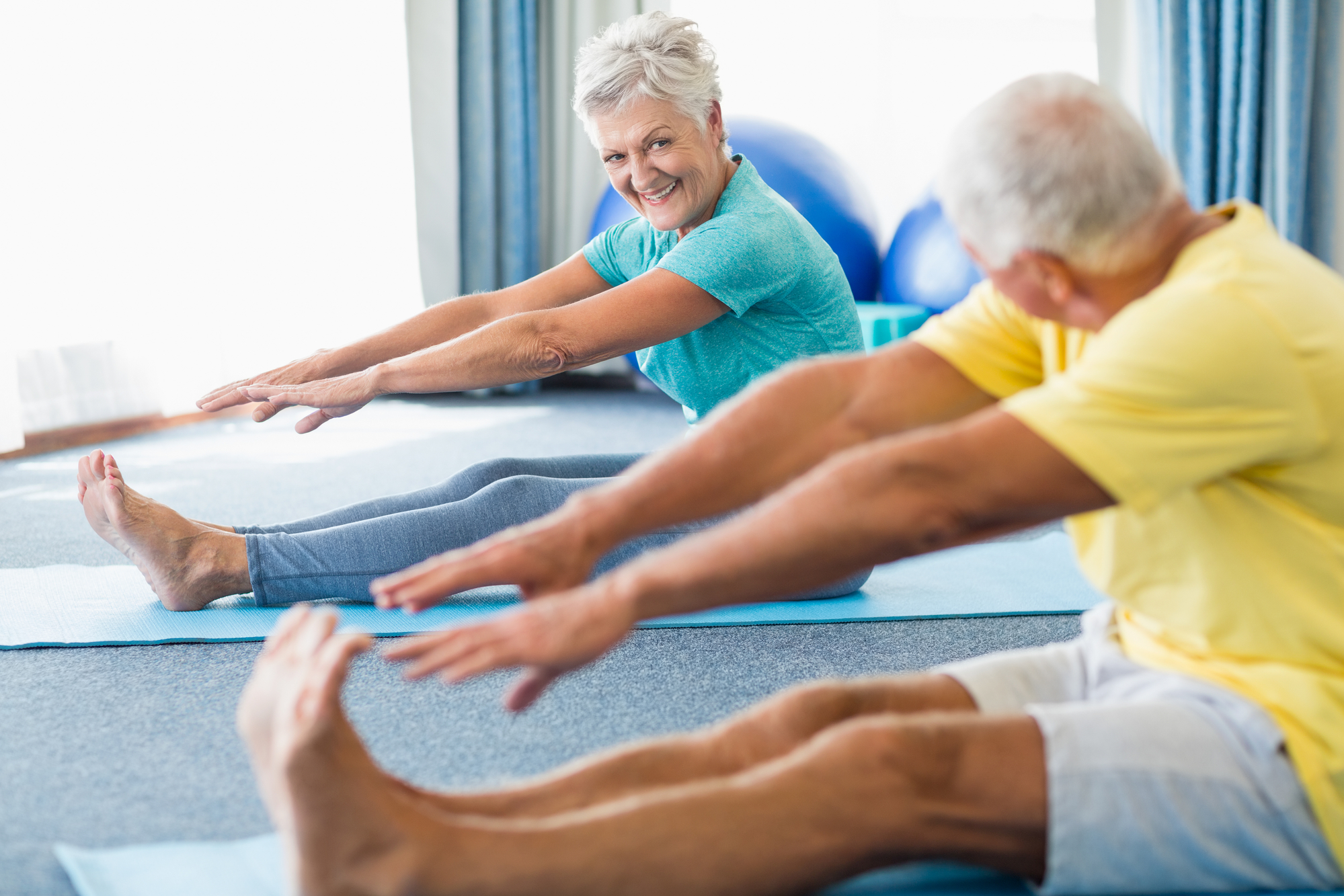As we age, staying active becomes increasingly important. For seniors, part of staying active includes maintaining flexibility, which means incorporating regular stretching into your exercise routine. While often overlooked, stretching is a vital component of a balanced exercise regimen, working alongside cardiovascular activities and strength training to promote longevity and enhance quality of life. From seniors looking to improve their flexibility to caregivers seeking ways to support an older loved one’s health, understanding the importance of stretching, along with tips to get started on the path to better mobility and vitality. To help, the following blog explores the importance of stretching for seniors.
Why is Stretching for Seniors Important?
As one grows older, muscles naturally lose elasticity, joints become stiffer, and range of motion decreases. As a result, these changes impact mobility, balance, and possibly the ability to perform everyday tasks. Fortunately, simple changes, such as consistent stretching help combat these age-related challenges. For more on why stretching for seniors is important, the following highlights the key benefits:
- Improves Flexibility and Range of Motion: Incorporating routine stretching into your routine helps maintain and improve flexibility in muscles and joints, which enables seniors to move more freely.
- Reduces Pain and Stiffness: Stretching helps alleviate muscle tightness and joint stiffness, particularly in areas prone to discomfort, such as the lower back, hips, and knees.
- Enhances Balance and Stability: In addition to improved flexibility, stretch helps improve core strength, which in turn, helps maintain better balance and stability (and aid in fall prevention).
- Reduces Risk of Injury: Through improved flexibility, mobility, balance and stability, stretching can help prevent injuries during daily activities or exercise.
- Improves Posture & Blood Flow: Consistent stretching can improve poor posture that may have developed over time, which in turn may help reduce by pain. Likewise, stretching promotes better circulation, which helps nourish muscles and joints.
- Promotes Well-Being: Stretching can help reduce stress, promote relaxation, and contribute to an overall sense of well-being.
As with any senior exercises, it’s important to start slowly, warm up before stretching, and avoid bouncing or stretching to the point of pain. Additionally, like any new physical activity, seniors should consult their healthcare provider before beginning a stretching program, especially if they have existing health conditions or injuries.
What are Easy Stretching Exercises for Seniors?
From increased flexibility and mobility to general core fitness, incorporating various stretches into your exercise routine helps maintain your current lifestyle. However, for those new to stretching or looking to start slow, there are some basic exercises for seniors that provide a nice foundation. Healthline offers an array of exercises and simple explanations to get started.
- Neck Stretch: Gently tilt your head to one side, bringing your ear toward your shoulder. Hold for 15-30 seconds and repeat on the other side. In addition to alleviating neck and shoulder pain, these stretches are important because they improve your range of motion.
- Shoulder Stretch: Slowly roll your shoulders forward, upward, and backward in a circular motion for 30 seconds, then reverse the direction. These stretching exercises help with shoulder mobility, which contributes to maintaining daily activities.
- Chest Opener: Interlace your fingers behind your back, straighten your arms, and lift your chest upward, while holding for 15-30 seconds. This senior stretch is a great way to counteract poor posture and improve upper body mobility.
- Seated Leg Stretches: While seated, extend one leg and reach for your toes. In addition to improving strength with seated chair exercises, this stretch improves hamstring flexibility, which helps alleviate lower back and hip discomfort.
- Back Stretch: Sit in a chair, place one hand on the chair arm behind you, and gently twist to that side. Hold for 10-30 seconds and repeat on the other side.
- Inner Thigh Stretch: Lie on your back with knees bent, then slowly lower one knee to the floor while keeping it bent. Hold for 10-30 seconds and repeat on the other side.
- Overhead Side Stretch: Stand tall, raise your arms overhead, and gently lean to one side. Hold for 10-30 seconds and repeat on the other side.
- Triceps Stretch: Raise your arms overhead, bend one arm behind your head, and use the other hand to gently pull the elbow. Hold for 10-30 seconds on each side.
- Ankle Stretch: Extend your legs and flex your ankles to improve ankle mobility.
Stretching seems simple, but like any activity, it can cause injury if not done correctly. As noted in the stretching exercises, aim to hold each stretch for 10-30 seconds and avoid bouncing. It is important to stretch until you feel tension, not pain. Generally, focus on each muscle group 2-3 times per week, and over time, continuously incorporating a variety of stretching exercises for seniors into your routine, you’ll improve your flexibility and experience the associated benefits.
How Often Should Seniors Stretch?
In order to experience the benefits of stretching, frequency is key. For example, seniors should aim to stretch major muscle groups at least 2-3 times per week for at least 10 minutes per session. However, daily stretching is considered the most effective for maintaining and improving flexibility. Additionally, depending on your overall health and comfort level, there are some adjustments to make to achieve more stretching benefits.
For example, as your body adapts to the stretching exercises, holding a stretch for 30-60 seconds may provide greater benefits for flexibility. While stretching each muscle group a few times a week, then timing matters. Generally, it’s beneficial to perform flexibility exercises on all days that cardiovascular or resistance training exercises occur, if possible.
Finally, while any stretching helps, it is important to align your breathing with stretching as well. Breathe deeply through your nose and exhale slowly through your mouth to maximize the relaxing benefits of stretching as well.
Remember, it’s always important for seniors to consult with a healthcare professional before starting a new exercise routine, especially if they have existing health conditions or injuries. The stretching program can be adjusted based on individual needs and capabilities.
Incorporating stretching and exercise into a senior’s routine can support a healthier and happier life. Many of these stretching exercises for seniors can be done at home, and seniors living in a community like Arbors of Hop Brooks can leverage the available wellness programs to support their efforts. To learn more about everything that our comprehensive care community has to offer, contact us today!


